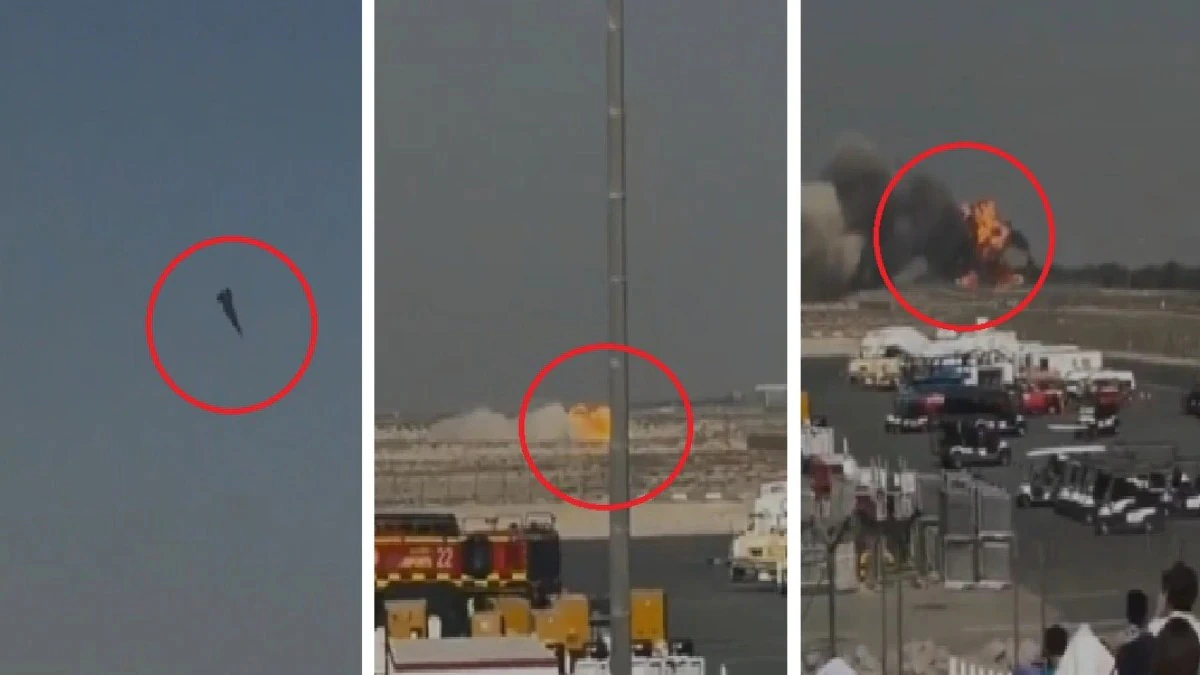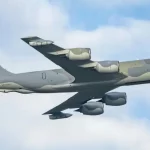Fresh analysis of eyewitness accounts and video footage from the Dubai Air Show has confirmed that the TEJAS Light Combat Aircraft (LCA) was executing a complex negative-G manoeuvre just seconds before it crashed on November 21, killing Indian Air Force pilot Wing Commander Namansh Syal.
The aircraft was seen entering the downward phase of a looping sequence when it experienced a rapid, uncontrolled loss of altitude. The transition left the pilot with almost no recovery window, and he was unable to eject before impact, resulting in fatal injuries.
What Is a Negative-G Manoeuvre?
Negative-G conditions occur when forces push the pilot away from the seat, creating sensations of weightlessness or upward pull. During such manoeuvres:
- Blood rushes toward the head, causing vision distortion and reduced reaction speed.
- Even brief miscalculations can destabilise aircraft attitude.
- Precision, timing, and full situational awareness are critical.
These manoeuvres are used in air displays to demonstrate aircraft agility but come with razor-thin safety margins, especially at low altitudes.
Why It Is Risky for High-Agility Fighters
The TEJAS is an aerodynamically unstable fighter intentionally built for extreme agility. Stability is maintained using a quad-redundant fly-by-wire (FBW) system that constantly makes micro-corrections.
During fast transitions between positive and negative G:
- The FBW system must process rapid control changes.
- Any sensor anomaly, delay in stabilization, or low-energy state can sharply reduce available lift.
- A slight mis-timing during recovery can lead to a steep descent with insufficient altitude to pull out.
Preliminary observations suggest that the aircraft may have entered a low-energy or high-angular-momentum phase during its attempt to level out, causing the nose-down trajectory that proved unrecoverable.
Tejas’ Safety Record and the Rarity of the Crash
Before the Dubai incident, TEJAS had one of the strongest safety records among modern fighters:
- Only one prior crash—in 2024 at Jaisalmer—occurred over 20+ years after its first flight.
- It had been widely praised for reliability compared to legacy platforms like the MiG-21.
- The aircraft participating in Dubai belonged to a frontline squadron based at Sulur.
The crash marks a rare and tragic setback for the programme, especially during an international display mission where TEJAS has often showcased India’s aerospace strengths.
Investigation Underway
A high-level Court of Inquiry is now analysing:
- Flight data and cockpit recorder inputs
- Pilot control actions in the final seconds
- FBW system response and sensor performance
- Atmospheric and wind conditions
- Possible G-awareness and pilot workload factors
The findings will determine whether the cause lies in human factors, aircraft behaviour during negative-G recovery, environmental shifts, or technical anomalies.
A Reminder of the Risks of Aerobatic Displays
Air show sequences are meticulously rehearsed, yet the narrow safety margins during high-energy demonstrations leave little room for error. The Dubai accident underscores:
- The extreme difficulty of negative-G manoeuvres
- The inherent risks of pushing aircraft to the edge of performance
- The need for absolute precision when flying unstable-platform fighters during displays
The loss of Wing Commander Syal has deeply shaken the aviation and defence community. While TEJAS continues to be a cornerstone of India’s fighter modernisation, the accident highlights the unforgiving nature of aerobatic flying—even with highly capable aircraft and expert pilots.













